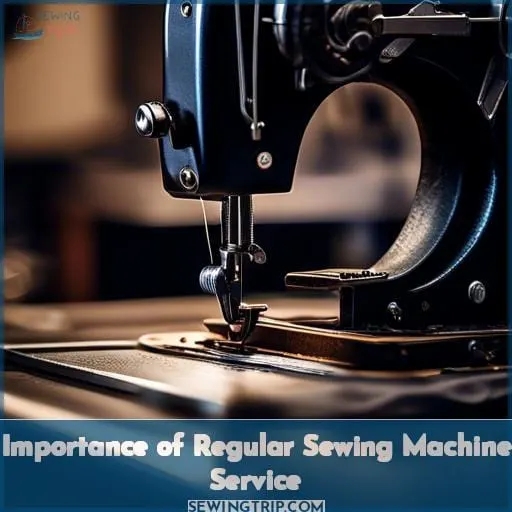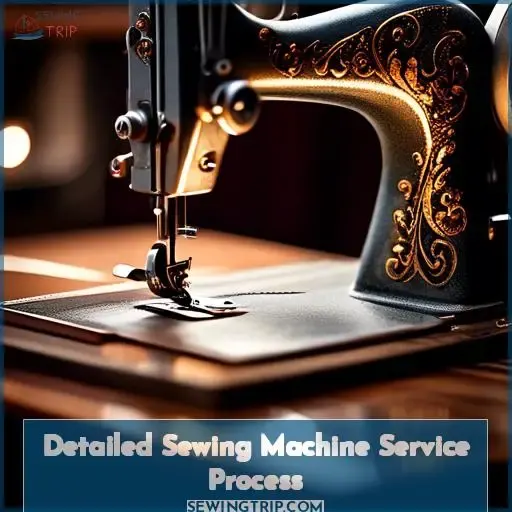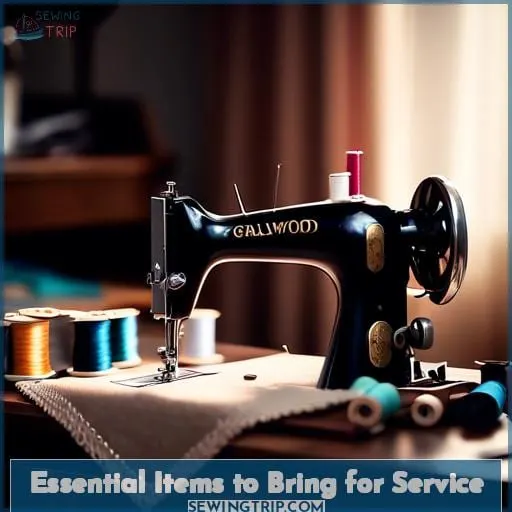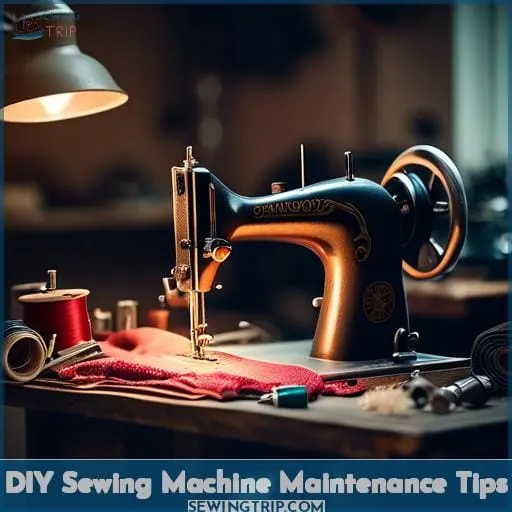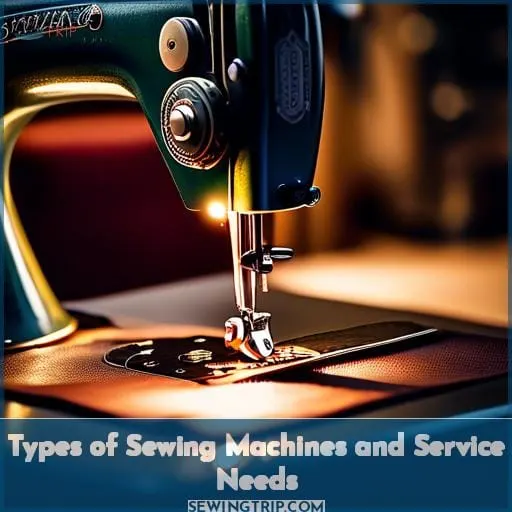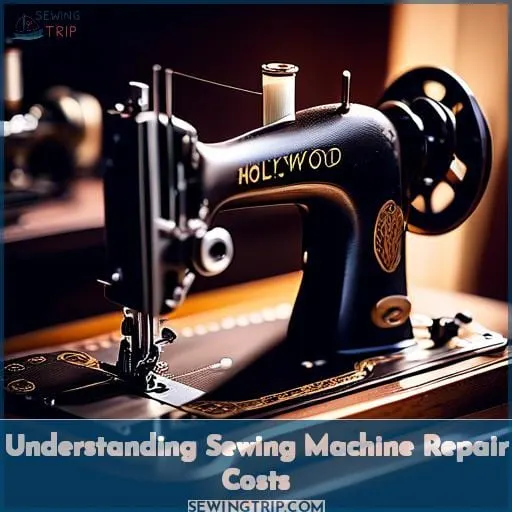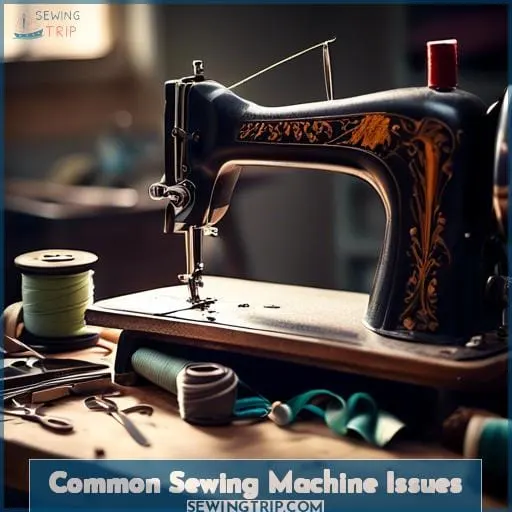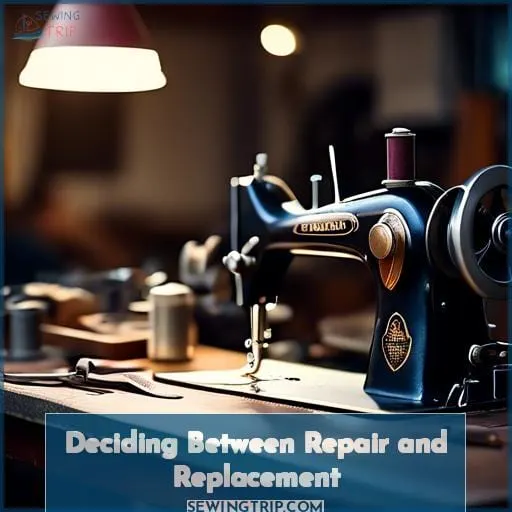This site is supported by our readers. We may earn a commission, at no cost to you, if you purchase through links.
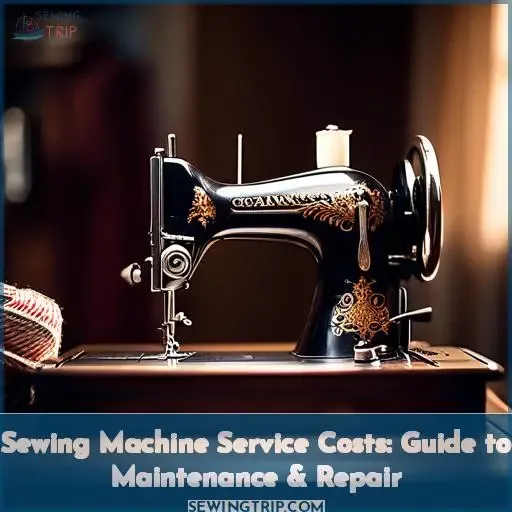 Just as a well-oiled machine runs smoothly, regular servicing ensures your sewing machine’s longevity and peak performance.
Just as a well-oiled machine runs smoothly, regular servicing ensures your sewing machine’s longevity and peak performance.
Understanding the costs involved in servicing a sewing machine is crucial for maintaining this essential tool in your crafting arsenal.
This guide will navigate you through the typical expenses, the importance of routine maintenance, and how to discern when professional help is needed, all while providing practical DIY tips to keep your machine humming along.
Let’s unravel the threads of sewing machine service costs together.
Table Of Contents
- Key Takeaways
- How Much Does It Cost to Service a Sewing Machine
- Overview of Sewing Machine Service Costs
- Importance of Regular Sewing Machine Service
- Detailed Sewing Machine Service Process
- Essential Items to Bring for Service
- DIY Sewing Machine Maintenance Tips
- Types of Sewing Machines and Service Needs
- Understanding Sewing Machine Repair Costs
- Common Sewing Machine Issues
- Deciding Between Repair and Replacement
- Finding a Qualified Sewing Machine Service Provider
- Frequently Asked Questions (FAQs)
- Conclusion
Key Takeaways
Sewing machine service costs can range from $75 to $100, highlighting the importance of regular maintenance to avoid costly repairs or replacements. Regular servicing of sewing machines is crucial for ensuring the machine’s readiness and functionality, helping to prevent unexpected and hefty repair bills.
The service process for sewing machines typically includes detailed steps such as cleaning, lubrication, lint removal, application of sewing machine oil, and adjustments to tension and timing.
DIY maintenance tips for sewing machine owners include:
- Cleaning the machine after each project
- Utilizing a quick 10-minute cleaning method
- Consulting local quilting shops for advice
- Checking the manual for troubleshooting
- Understanding that regular cleaning significantly extends the life of the machine
[END]
How Much Does It Cost to Service a Sewing Machine

Servicing a sewing machine typically costs between $75 to $100, but prices can vary based on the shop and the machine’s complexity. This fee generally covers a tune-up but does not include the cost of any necessary replacement parts.
Overview of Sewing Machine Service Costs
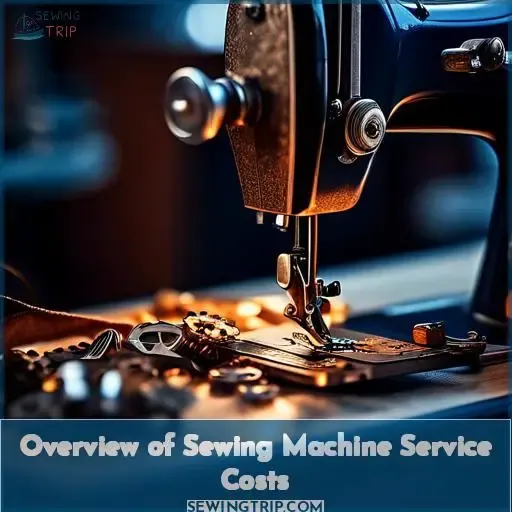
When you’re eyeing the health of your trusty sewing companion, understanding the costs tied to sewing machine service is like finding the map to buried treasure.
A repair estimate can swing from $75 to $100, not counting any extra parts your machine might whisper for. Think of it as a spa day for your machine, ensuring its longevity without breaking the bank.
Regular tune-ups and cleaning sessions are the secret sauce to avoiding a hefty replacement cost down the line. It’s all about hitting those service intervals with precision, ensuring your machine runs smoothly.
This preventive maintenance is the stitch in time that saves nine, keeping your sewing adventures on track without a hitch. So, roll up your sleeves for some sewing machine maintenance, because a little love and care can go a long way in keeping your fabric friend purring like a kitten.
Importance of Regular Sewing Machine Service
Keeping your sewing machine in tip-top shape isn’t just about dodging hefty repair bills; it’s about ensuring your trusty tool is always ready for action.
Think of preventative maintenance as your machine’s personal fitness plan—regular check-ups keep it running smoothly, avoiding the stitch in time that saves nine.
Dive into DIY repairs with gusto, armed with cleaning methods that are as simple as they’re effective.
Don’t wait for the cogs to creak; timing your services can be as crucial as finding the right technician.
Whether it’s sewing machine service costs that have you scratching your head or the quest for sewing machine repair near me, remember, a stitch in time not only saves nine but also keeps your creative journey uninterrupted.
Detailed Sewing Machine Service Process
You’ll need to focus on cleaning and lubrication, along with tension and timing adjustments, during the sewing machine service process. These steps are crucial for ensuring your machine operates smoothly and efficiently.
Cleaning and Lubrication
Keeping your sewing machine in tip-top shape is a bit like giving it a spa day. Here’s how to pamper your mechanical buddy:
- Banish the fuzzies with dedicated lint removal—think of it as a deep-tissue massage for your machine.
- Apply sewing machine oil like a soothing balm to those hardworking moving parts.
- Employ sewing machine brushes for a meticulous clean in every nook and cranny.
- Fine-tune the tension adjustments; it’s the chiropractic alignment it never knew it needed.
Tension and Timing Adjustments
After giving your sewing machine a thorough clean, it’s time to dive into the nuts and bolts of tension calibration and timing adjustments.
Achieving tension equilibrium and timing precision is crucial for smooth operation. Think of it as tuning a guitar; each string (or tension setting) must harmonize perfectly.
This step ensures your sewing machine sings rather than squawks during use.
Essential Items to Bring for Service
Transitioning from the intricate process of servicing your sewing machine, let’s dive into what you need to pack for your service appointment.
Think of it as prepping for a mini-vacation, where your sewing machine is the star of the show. Your packing list should include the essentials: the sewing machine itself, foot pedal control, power cord, and the standard zig-zag presser foot.
Don’t forget the bobbin—consider it the unsung hero of your sewing adventures.
For those with embroidery machines, adding the embroidery hoop and foot to your list is a must. Organizing these items isn’t just about ticking boxes; it’s about ensuring your service runs as smoothly as silk.
Remember, a well-prepared machine means a happier repairman and potentially lower sewing machine repair costs.
DIY Sewing Machine Maintenance Tips
You’ll save on service costs by cleaning your sewing machine after each project. A quick 10-minute cleaning method can keep your machine in top condition between professional services.
Cleaning After Each Project
After dropping off your machine with all the necessary bits and bobs, it’s time to dive into DIY territory.
Regularly cleaning your machine post-project is crucial. Whip out that lint brush and tackle thread fuzz with gusto.
For deeper dives, local quilting shops are gold mines for maintenance tips.
Quick 10-Minute Cleaning Method
After tackling your project, dive into a quick cleaning spree. Grab your cleaning supplies and flick away lint with gusto, turning a mundane task into a race against time.
This isn’t just about tidiness; it’s about mastering your machine’s quirks. Peek at the manual for troubleshooting tips, ensuring your maintenance isn’t just swift but spot-on.
Types of Sewing Machines and Service Needs
Switching gears from the DIY upkeep of your trusty stitch-wizard, let’s delve into the diverse world of sewing machines and their specific service demands.
Whether you’re threading a classic mechanical model or programming a sleek computerized unit, each type has its own maintenance checklist and associated service costs. Understanding the nuances of sewing machine types is crucial for ensuring your equipment runs smoothly and avoids costly repairs.
From the sturdy long-arm quilter to the intricate embroidery machine, each requires a keen eye for detail during servicing. Remember, regular maintenance can prevent the stitch in time that saves nine, keeping service costs from unraveling your budget.
So, keep your machine humming and your wallet happy by staying on top of your sewing machine service needs.
Understanding Sewing Machine Repair Costs
After diving into the types of sewing machines and their service needs, let’s unravel the thread of sewing machine repair costs.
It’s a tangled skein, with prices varying as widely as the fabrics you stitch. Repair options can range from a quick fix to a major overhaul, where the cost might have you considering a new machine altogether.
Don’t forget the machine requirements; bringing the right tools and parts can save time and money. Whether it’s a hiccup in your heirloom Singer or a glitch in your modern marvel, understanding sewing machine repair costs is key to keeping your creative journey on track.
Common Sewing Machine Issues
You’ll often encounter thread and needle problems with your sewing machine, leading to frustrating sewing experiences. Fabric feeding inconsistencies can also disrupt your projects, requiring careful adjustments or professional service.
Thread and Needle Problems
When your sewing machine throws a tantrum, it’s often a tangle of thread issues. You’re not alone if you’ve faced:
- Thread tension tantrums causing uneven stitches
- Needle breakage, turning your sewing session into a needle nightmare
- The dreaded needle bending, making straight lines as elusive as a straight-faced cat
- Thread fraying, more unraveled than a mystery novel without a final chapter
Fabric Feeding Inconsistencies
When your fabric’s playing tug-of-war, it’s often a tango between tension settings and needle size.
Think of your sewing machine as a dance partner; mismatched steps (like a too-large needle or a pressure foot with an attitude) lead to fabric feeding hiccups.
Regular service checks, especially focusing on feed dog alignment and tension harmony, keep the dance smooth and your wallet happier.
Deciding Between Repair and Replacement
When your trusty sewing machine starts acting up, you’re at a crossroads: fix it or fork out for a new one? Estimating repair costs is your first step.
If the price tag for repairs makes your wallet weep, weighing repair vs. replacement becomes crucial. Think about your machine’s repair history; if it’s been more trouble than it’s worth, maybe it’s time for an upgrade.
Evaluating repair options isn’t just about cost—it’s about value. What’s your machine worth to you, emotionally and functionally? Assessing machine value against sewing machine service costs can be a stitch in time, saving you from future headaches.
Finding a Qualified Sewing Machine Service Provider
After weighing the pros and cons of repair versus replacement, you’re on the hunt for a top-notch sewing machine service provider.
Here’s a stitch in time: start with word-of-mouth referrals. Nothing beats a glowing recommendation from a fellow stitch wizard.
Dive into online reviews for the unvarnished truth on who’s the real deal.
Don’t overlook local community groups and sewing machine clubs; these are goldmines for insider info.
And for the digitally savvy, social media forums are bustling with advice.
Keep your threads tight and your options open!
Frequently Asked Questions (FAQs)
Can servicing extend my sewing machine’s lifespan?
Yes, regular servicing can indeed give your sewing machine a new lease on life. It’s like a spa day for your machine, ensuring it runs smoothly and stays in tip-top shape for years to come.
Are there any warranties on sewing machine services?
Worried your sewing machine’s tune-up might go kaput right after? Fear not, many services offer warranties, ensuring your machine keeps humming smoothly.
How do environmental factors affect sewing machines?
Environmental factors like humidity can rust your machine’s metal parts and mess with thread and fabric behavior, while dust buildup can clog it up and cause a stitch of trouble.
What are the signs of a poorly maintained machine?
A poorly maintained sewing machine sings a tune of skipped stitches, persistent thread tantrums, and the grumble of strained gears.
How does frequent use impact service frequency?
Frequent use turns your sewing machine into a lint magnet, demanding more spa days than a diva. It’s like clockwork; the more you sew, the more it craves that tender, loving care.
Conclusion
Awaiting the final twist, the cost to service a sewing machine might seem like a mere detail, yet it’s a pivotal factor in ensuring your crafting companion’s longevity and performance. By embracing regular maintenance, understanding the service process, and applying DIY care, you’re investing in seamless creativity.

